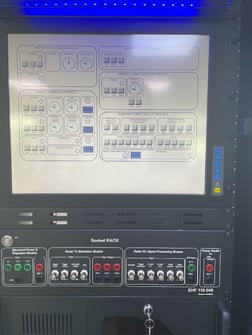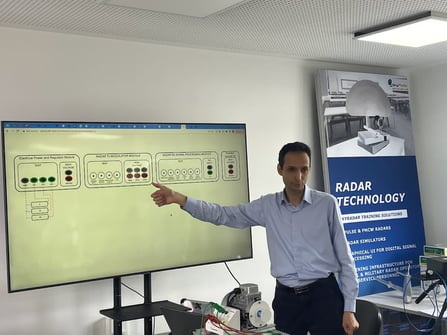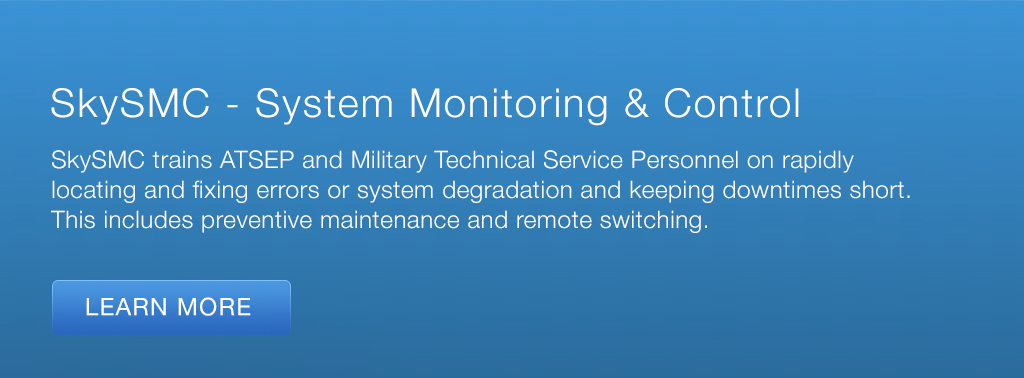Transmitter errors due to power drop in ATC can jeopardize safety, causing distorted communication and potential dangers. Reliable backup power systems are crucial to prevent such issues and maintain continuous communication for safe air traffic control.
Air Traffic Control (ATC) is a critical aspect of the aviation industry that ensures the safe and efficient movement of air traffic. The ATC system relies heavily on communication between pilots and air traffic controllers, which is facilitated by complex equipment and systems. One such system is the radio communication system, which allows pilots and controllers to communicate with each other in real-time. However, like any other electronic system, radio communication systems are prone to errors, and one common type of error is transmitter errors due to power drop.
Definition of Transmitter Errors due to Power Drop
Transmitter errors due to power drop occur when the voltage or current supplied to a transmitter drops below the required level, leading to errors in the transmission of signals. In the context of ATC, this means that the communication between pilots and controllers may be disrupted, distorted, or lost, leading to confusion, delays, or even accidents.
What is Power Drop?
Power drop is a phenomenon that occurs when the voltage or current supplied to a device drops below the required level. This can happen due to various reasons such as resistance in wires, poor connections, low-quality components, or faulty power supply. When the power drops, the device may not function properly or may exhibit errors in its operation.
For example, suppose a radio transmitter requires 10 volts to operate correctly. If the voltage drops to 8 volts due to a power drop, the transmitter may not function correctly, leading to errors in the transmission of signals.
Scenario that illustrates impact of transmitter error related Power Drop on Air traffic Control Services
Imagine a busy afternoon at a major international airport. The air traffic control tower is responsible for managing the arrival and departure of hundreds of flights, ensuring that they take off and land safely and on time. Suddenly, there is a power drop, and the radio communication system between air traffic controllers and pilots fails.
As a result of the power drop, the communication system loses power, causing a temporary interruption in the transmission of critical information between air traffic controllers and pilots. The air traffic controllers are unable to communicate with the pilots, leaving them uncertain about the status of the flight operations. Meanwhile, the pilots are unable to receive critical instructions from the air traffic controllers, such as clearance for takeoff or landing.
The loss of communication causes chaos in the air traffic control system. Flights are delayed, and some are diverted to other airports. Passengers become anxious and frustrated as they wait for updates on their flights. The airline companies are forced to rebook passengers on later flights or issue refunds, causing financial losses. The airport authorities are under immense pressure to restore the communication system and ensure the safety of air travel.
This scenario highlights the potential impact of transmitter errors related to power drop on air traffic control services. It shows how the loss of communication between air traffic controllers and pilots can disrupt flight operations, cause delays, and compromise the safety of air travel. It also emphasizes the importance of preventive measures, such as regular equipment maintenance, to prevent transmitter errors related to power drop and ensure the smooth functioning of air traffic control services.
Factors Responsible for Power Drop Related Transmitter Errors
Several factors can contribute to power drop related transmitter errors. Some of the most common factors are given below
Electrical Interference
Radio communication systems are vulnerable to electromagnetic interference (EMI) from other electronic devices, power lines, or even lightning strikes. EMI can cause a drop in power and disrupt the transmission of signals.
Cable Resistance
The cables used to connect the transmitter to the power supply and antenna can exhibit resistance, leading to a voltage drop. This can be due to factors such as the length of the cable, the thickness of the wire, or the quality of the cable.
Power Supply Issues
The power supply unit (PSU) that provides power to the transmitter can fail or malfunction, leading to a drop in voltage or current. This can happen due to factors such as overheating, aging, or poor maintenance.
Faulty Components
The transmitter itself can have faulty components such as capacitors, resistors, or transistors, which can lead to a drop in power.
Human Error
Human error can also contribute to power drop related transmitter errors, such as improper installation, maintenance, or operation of the equipment.
Common Types of Transmitter Errors Caused by Power Drop
Power drop related transmitter errors can manifest in various ways, depending on the severity and duration of the power drop. Some common types of transmitter errors are
Distortion
A power drop can cause distortion in the transmission of signals, leading to unclear or unintelligible communication.
Noise
A power drop can also cause noise in the transmission of signals, leading to background interference and difficulty in hearing the message.
Signal Loss
A severe power drop can cause a complete loss of signal, leading to a complete breakdown in communication between the pilot and the controller.
False Signals
A power drop can cause false signals or phantom transmissions, leading to confusion and potential safety hazards. The impact of power drop related transmission errors on air traffic control services can be severe, potentially leading to safety hazards and disruptions in air traffic. The following are some of the impacts
Communication Breakdown
The primary impact of power drop related transmission errors is a breakdown in communication between pilots and controllers. This can lead to confusion, delays, and potential safety hazards. For example, if a controller cannot communicate with a pilot, they cannot provide critical information such as changes in flight path, weather conditions, or other hazards.
Flight Delays
Power drop related transmission errors can also cause flight delays. For instance, if a controller cannot communicate with a pilot due to a power drop, the pilot may have to wait for the communication to be restored before proceeding with the flight. This delay can have a ripple effect on other flights, causing further delays and disruptions.
Miscommunication
Power drop related transmission errors can also lead to miscommunication between pilots and controllers. This can happen due to distortion, noise, or false signals caused by the power drop. Miscommunication can lead to confusion, misunderstandings, and potential safety hazards.
Safety Hazards
Power drop related transmission errors can pose significant safety hazards in the aviation industry. For example, if a controller cannot communicate with a pilot due to a power drop, they cannot provide critical information such as changes in flight path, weather conditions, or other hazards. This can increase the risk of accidents or incidents.
Steps to be taken by ATSEP in Rectification of Transmitter Errors related to Power Drop
ATSEP (Air Traffic Safety Electronics Personnel) are responsible for the installation, maintenance, and repair of the air traffic control systems, including the radio communication systems. In the event of transmitter errors related to power drop, the following steps can be taken by ATSEP to rectify the issue
Identify the Cause
The first step is to identify the cause of the power drop related transmission error. This can involve inspecting the cables, power supply, transmitter, and other components of the system.
Repair or Replace Faulty Components
Once the cause has been identified, the faulty components can be repaired or replaced, depending on the severity of the damage.
Test the System
After the repairs or replacements have been made, the system should be thoroughly tested to ensure that it is functioning correctly.
Ensure Redundancy
To prevent future power drop related transmission errors, redundancy measures should be put in place, such as backup power supplies, redundant cables, and other fail-safe measures.
Steps to be followed by ATSEP for preventing Power Drop Related Transmitter Errors
Preventing power drop related transmitter errors involves proactive measures that ATSEP can take to ensure the system is functioning correctly. The following steps can be taken to prevent power drop related transmitter errors
Regular Maintenance
Regular maintenance of the system can help identify and prevent power drop related transmitter errors before they occur.
Quality Components
Using high-quality components such as cables, power supplies, and transmitters can help prevent power drop related transmitter errors.
Proper Installation
Proper installation of the system can help prevent power drop related transmitter errors. This includes ensuring that the cables are properly grounded and shielded, and that the power supply and transmitter are installed correctly.
Regular Testing
Regular testing of the system can help identify and prevent power drop related transmitter errors. This can include both functional and performance testing.
Redundancy Measures
As mentioned earlier, redundancy measures such as backup power supplies, redundant cables, and other fail-safe measures can help prevent power drop related transmitter errors.
Responsibility of Air Traffic Controllers and Pilots to Prevent Errors due to Power Drop
In addition to the steps that ATSEP can take to prevent power drop related transmitter errors, there are also steps that pilots and controllers can take to prevent errors due to power drop. These steps are stated below
Maintain Situational Awareness
Pilots and controllers should maintain situational awareness and be alert to the possibility of power drop related transmitter errors. This can include monitoring for distortion, noise, or false signals during communication.
Use Backup Systems
Pilots and controllers should have backup systems in place in the event of power drop related transmitter errors. This can include using backup communication systems or backup navigation systems.
Research Highlights
Research has been conducted to study the impact of power drop related transmitter errors on air traffic control services. The following are some highlights of this research
- In a study conducted by the Federal Aviation Administration (FAA), it was found that power drop related transmitter errors were the leading cause of communication failures in air traffic control services.
- Another study conducted by the FAA found that power drop related transmitter errors were responsible for approximately 20% of all communication failures in air traffic control services.
- A study conducted by the National Transportation Safety Board (NTSB) found that power drop related transmitter errors were responsible for several aviation incidents, including the 2006 crash in Brazil and the 2010 crash in the United Arab Emirates.
- Research has also been conducted to develop new technologies and methods for preventing power drop related transmitter errors. For example, some researchers are exploring the use of software-defined radios (SDRs) to improve the reliability and resilience of communication systems.
Some of the technologies and methods being researched to prevent power drop-related transmitter errors include
Reducing Power Consumption
One approach to preventing power drop-related transmitter errors is to reduce the power consumption of the communication system. This can be done through the use of low-power components, improved power management techniques, and other methods.
Dynamic Power Management
Another approach is to use dynamic power management techniques that can adjust the power usage of the system based on the current operating conditions. For example, the power usage can be reduced during periods of low traffic or when the system is idle.
Improved Grounding and Shielding
Improved grounding and shielding techniques can also help prevent power drop-related transmitter errors. This can include using better shielding materials, improving the grounding system, and reducing the impact of electromagnetic interference (EMI) on the system.
Fault-Tolerant Systems
Fault-tolerant systems can also be used to prevent power drop-related transmitter errors. These systems can automatically detect and correct errors in the communication system, allowing it to continue operating even in the presence of faults or failures.
Software-Defined Radios
Software-defined radios (SDRs) are another technology being explored for improving the reliability and resilience of communication systems. SDRs use software to implement radio functions, allowing for more flexibility and adaptability in the communication system.
Advanced Monitoring and Diagnostics
Advanced monitoring and diagnostics tools can be used to detect and diagnose power drop-related transmitter errors. These tools can help identify the root cause of the error and enable the system to be quickly and efficiently repaired.
Advanced Communication Protocols
Advanced communication protocols can also be used to prevent power drop-related transmitter errors. These protocols can improve the efficiency and reliability of the communication system, reducing the risk of errors and failures.
Hence power drop-related transmitter errors can have a significant impact on air traffic control services. However, through the use of proactive measures such as regular testing, redundancy measures, and improved grounding and shielding, as well as the development of new technologies and methods, such errors can be prevented and the reliability and resilience of communication systems can be improved. It is important that ATSEP, pilots, and controllers work together to ensure the safety and efficiency of air traffic control services. To achieve this goal, it is essential that all parties involved in air traffic control services receive adequate training and education on the risks and challenges associated with power drop-related transmitter errors. ATSEP, pilots, and controllers should be trained to identify and respond to power drop-related issues quickly and efficiently.
SkyRadar's System Monitoring & Control Solution
SkySMC - SkyRadar’s System Monitoring and Control Suite is a pedagogically enhanced, fully operational monitoring & control tool. It has been designed to practice these use cases. We have optimized it to host ATSEP training in SUR, NAV, COM, DPR and SMC compliant to EASA's Easy Access Rules for ATM-ANS (Regulation (EU) 2017/373) and ICAO Doc 10057.
SkyRadar provides SkySMC as a complete laboratory in a turn-key approach, or as a virtual infrastructure (for purchase or as a service).
SkySMC is not a simulator, but a fully operational open monitoring system. It comes by default with a server including various virtualized applications and virtualized servers, but also connects to simulated systems. In addition, there are various hardware extensions available including training infrastructures, monitorable training radars, or even complete ATM systems, all connected to the System Monitoring & Control solution. Most components such as the radars, it IT infrastructure or networks exist in hardware and software (virtualized or simulated).
The two photos above show the same trouble-shooting panel and socket rack in real hardware and in the simulator (fully functioning).
SkyRadar's System Monitoring & Control training system can be easily blended into distance learning solutions and existing learning management systems.
Let's talk
Stay tuned to be always the first to learn about new use cases and training solutions in ATSEP qualification (real radars or simulators).
Or simply talk to us to discuss your training solution.
References
-
"Aviation Communications" by International Civil Aviation Organization
-
Accident Report, National Transportation Safety Board (NTSB). (2011).
-
Accident Report, National Transportation Safety Board (NTSB). (2012).
-
Aviation Communications: Overview of FAA Programs to Improve Communications and Address Potential Safety Risks, Federal Aviation Administration (FAA). (2015).
-
Safety Risk Management of Power Outages in Air Traffic Control Facilities, Federal Aviation Administration (FAA). (2016).
-
Software-Defined Radios as a Means to Enhance the Reliability of Air Traffic Communication Networks, Carvalho, Figueiredo, & Rodrigues (2017).






